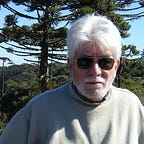Journalism as a structure of public communication
(English version of a Portuguese original using Google Translator and Grammarly)
Everything indicates that journalism will no longer be, mostly, a job in the industrial production chain of news as it is gradually transforming itself into a public structure of communication, a term still little known, but which places the profession in a very different context from the one currently practised by most professionals.
The change is a direct consequence of the digitization of news. Until the emergence of the internet, journalism relied on companies capable of printing newspapers and magazines, or broadcasting on radio and TV stations. The journalist became a paid member of a production line with industrial characteristics, a context that ended up determining a set of routines, rules and values.
But when new digital technologies drastically changed the way news was investigated, written and disseminated, newspaper companies lost their monopoly on using journalism as their main source of income. In addition to the multiplication of self-employed professionals, thanks to resources such as blogs, web pages, and news messaging sites, digital social networks have become the main information source for the younger public.
Digital innovations showed the limitations of the journalistic field in the analogue era and extraordinarily expanded the scope of action for reporters, editors, commentators, photographers, videographers and programmers by making them an integral part of a planetary network. Inevitably, the transformations affected how journalists started to insert themselves into society as a whole. They ceased to be mere news providers to become a vital link to the coming and going of data, facts and events circulating on the internet.
We are living in a news-driven environment. Even personal conversations between users of social networks are fed by the news, collected or not from the press, according to research by Professor Christoph Raetzsch, from the University of Berlin. Sociological observation of message flows on social networks showed that they began to revolve around news, creating a relationship between journalists and the public. This relationship always existed, but it was very weak and occasional. Now, in the digital age, it has become omnipresent, as can be seen on Twitter, WhatsApp, and Instagram, among others.
New information spaces
By being placed in this new context, journalists have become news producers and consumers at the same time, which induced them to develop a whole new set of procedures, norms and values. The field of news production has expanded beyond writing, editing and publishing practices. The new reality of contemporary journalism forces it to resolve issues such as financial sustainability, combating fake news, co-production of news with non-journalists, robotization and multimedia narratives.
These are some of the innovations that are being developed by journalism in the concrete practice of the relationship between professionals and non-journalists within the information system defined as a public communication structure. This is a perspective capable of changing the course of the profession since the relationship between professionals and their public becomes much more intense and direct than in a traditional printed newspaper.
The details of how journalism will become a public communication structure are still being worked out, especially among academic communication researchers. The fact that they are in the middle of a radical transformation of their profession means that many journalists still resist changes, preferring to cling to what is safe and known, despite the evidence that the transformations are irreversible.
On the other hand, the public, empirically, advances more and more in the occupation of spaces in digital information flows, especially in digital social networks, where today 70% of people, on average, get information. The public and journalists now share the same news spaces on the Internet, leaving professionals with the specific task of giving practical meaning to this reality, by developing a public communication structure that maximizes the results of information exchanges between professionals and non-professionals.
